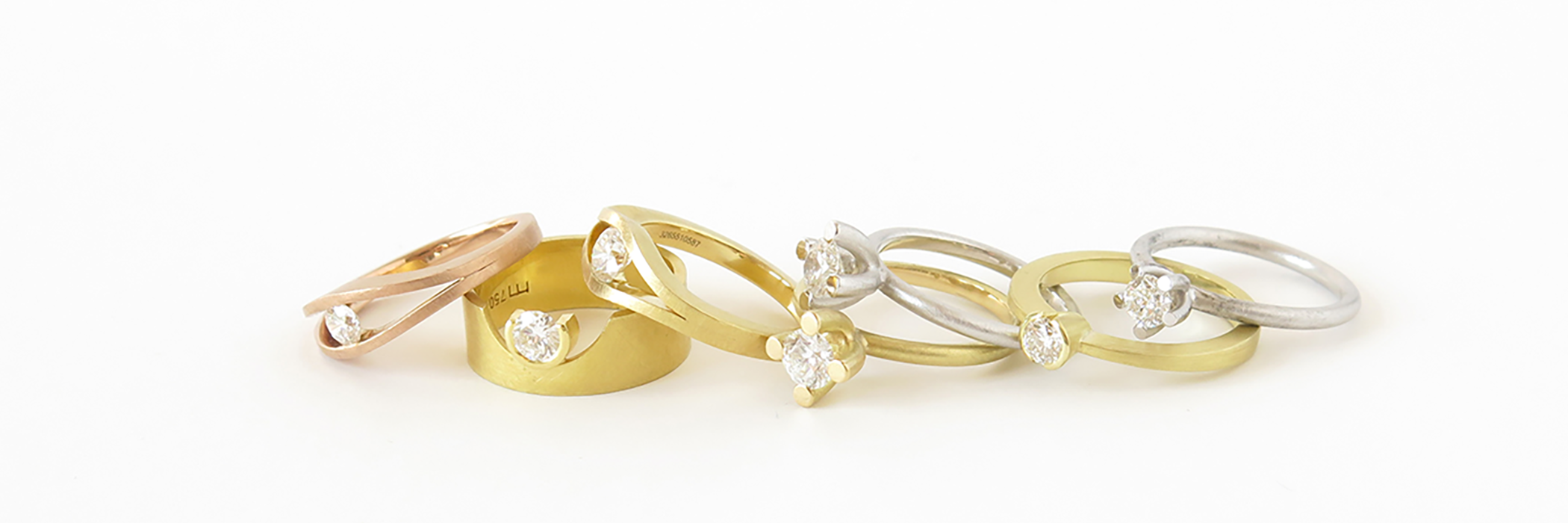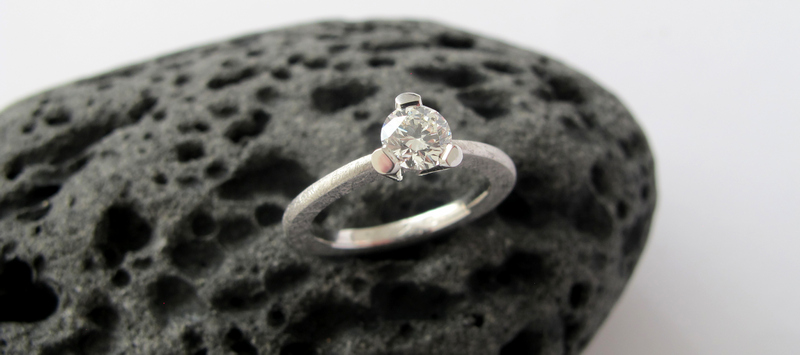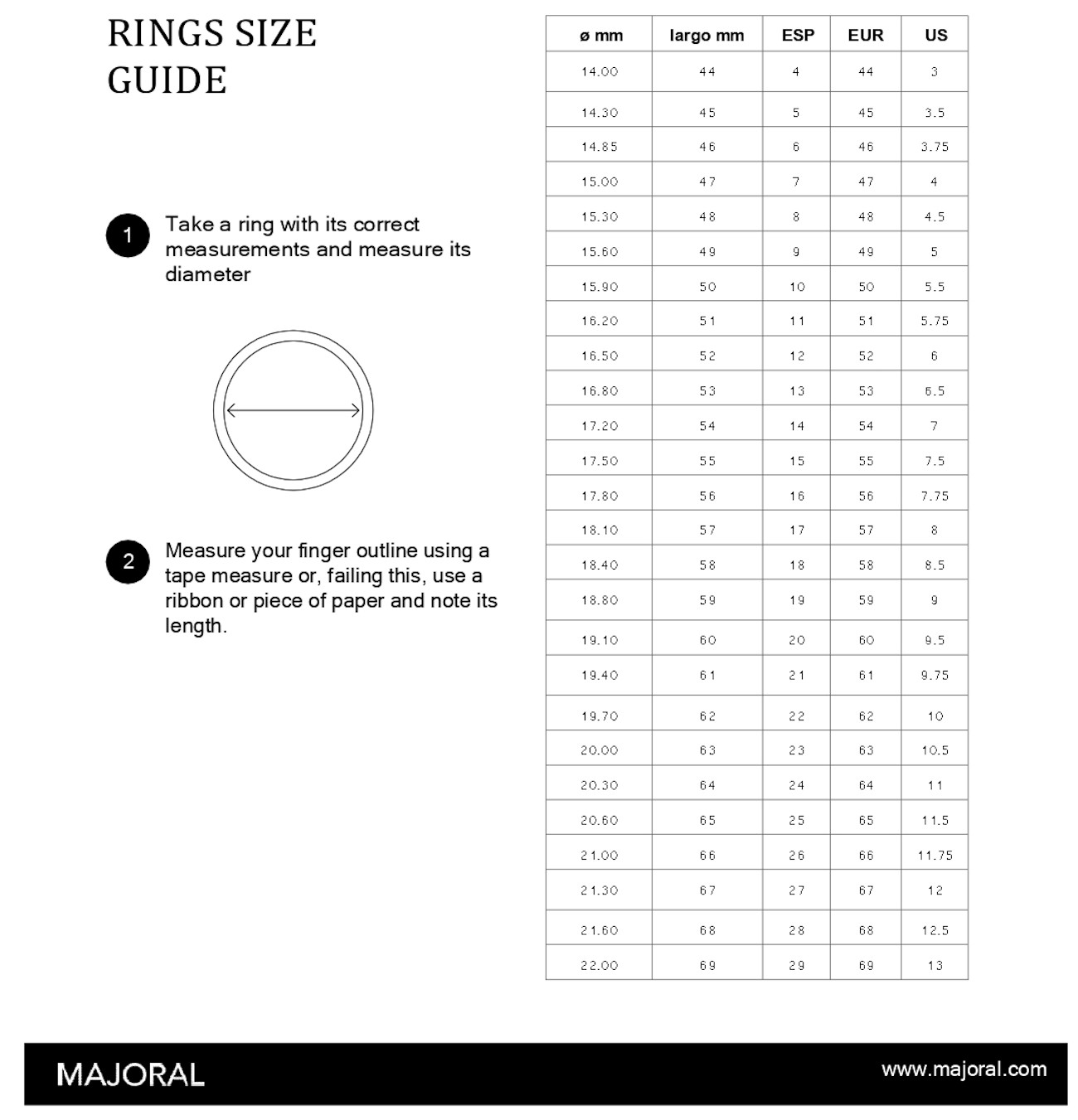
The use and meaning of the diamond in jewellery: the par excellence mineral that turns jewellery into amulet
The properties of the diamond, recognised as the hardest natural material in the world, has become a valued mineral that jewellery has used to transmit perfection, purity and love.
The diamond, a mineral that emerges from coal on being subjected to high pressure and temperature, has been, since the beginning of civilisation, one of the most valued and sought-after minerals. Historians place the discovery of the diamond at about 3,000 years ago. Its physical properties, which are characterised by its hardness, purity and sparkle, meant that it rapidly became considered as something unique and mystical.
Although jewellery was already a consolidated activity more than 3,000 years ago, the first diamonds were used as amulets or even to make tools. Considered amulets, diamonds were also conceived as a symbol of power, so they were not shown in public. Diamonds also quickly acquired a religious meaning in many civilisations.
Ancient Greece, the Pioneer in the discovery of diamonds
The name diamond comes from the Greek word adamas, which means indomitable. It is a word that originates from another Greek word: adamao, which means “I submit”. This Greek linguistic root also means hardness, and was used for both the diamond and some sapphires. This is why the discovery of the diamond is linked to the shore of the eastern Mediterranean, where Ancient Greece was situated. Due to its properties, the diamond is linked to mythological tales. Thus, the Greeks considered diamonds to be the tears of the Gods; they were also thought to be the arrows fired by the god of love, Cupid, which culminated in the form of a diamond. For the philosopher Plato, diamonds were living beings that had celestial spirits.
Some centuries later, in the Roman period, diamonds began to be worn on the body as an amulet. For the Romans they were an object that provided invincible strength, and warriors would wear them during battles. Even though their use was still unconnected to jewellery, the Roman era was the first time that diamonds were placed on a person’s body.
The diamond takes on a role in jewellery: 14th-century France
In fact, to find the first use of the diamond as a resource in jewellery as we understand it today in Europe, we have to fast-forward to the 14th century. To France, to be exact, in a still medieval and monarchic context. It was then when the first diamonds emerged on a necklace worn by the French queen Clemence, wife of Louis X. In that same period, Edward Prince of Wales bought 27 rings, some of them with diamonds. The most extensive use of diamonds by jewellers coincided with the colonial era, and the discovery of deposits in, firstly, Brazil, and later in Africa.
Until the 19th century, the use of diamonds in jewellery was rather exclusive. Only the ruling classes wore this mineral unique in the world, due to the few existing deposits. This meant that there were also very few jewellers who would create pieces with diamonds. The discovery of new deposits in the late-19th century, and the appearance of synthetic diamonds later, meant that the use of diamonds would spread and would be slightly more democratised at the turn of the 19th and 20th centuries.
The diamond as a symbol of purity, love and perfection
The purity of the diamond makes it a unique mineral in the world. And the jewellery sector has historically used diamonds as a symbol of exclusiveness and love, used for engagement and wedding rings. However, the appearance of new artistic currents in jewellery as from the 20th century has given the diamond new meanings, such as brilliance, happiness, or commitment to social and universal natural values.
Diamonds, therefore, no longer had a sole purpose linked to commitment and love, and were integrated into other pieces, as an added element of design, creating jewellery that played with the sparkling nature of the hardest mineral in the world.
The use of diamonds in contemporary jewellery: the Majoral collections
Since the firm’s early days, Majoral has considered diamonds as another precious stone to form part of the creation of his contemporary jewellery collections. In the same way that Majoral uses gold and silver, giving new meanings to the traditional materials of jewellery, as well as incorporating the diamond into his unique designs. Without renouncing the historic symbols that link the diamond with commitment and love, Majoral created the Diamond Ethical Symbol collection. A collection of engagement rings that combine yellow and white gold with the diamond to create elegant pieces for unique moments.
Majoral also uses the diamond as another stylistic resource to create new languages within jewellery. This is the case of the Flô collection, which combines Fairmined gold with diamonds to create plant-like outlines. Made up of small pieces of matt metal, the diamond finds itself surrounded, producing a subtle and elegant brilliance to the person who wears the piece.
Majoral’s boldness in creating new forms through jewellery can also be found in the Nius collection where he combines the sparkle of the diamond with oxidised silver, producing contrasts that evoke the protective nature of a nest, a receptacle created to protect that precious stone.
 Cookie preferences
Cookie preferences



